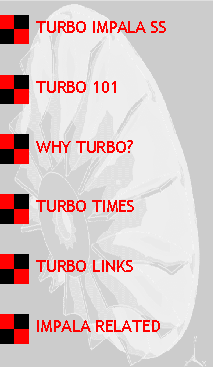Article from: Sport Compact Car Magazine
October 1994
BY CHRIS WEISBERG
The term "turbo" or "turbocharger" is frequently heard in the world of
high-performance. However, many people are unfamiliar with these devices and this is
unfortunate, because turbocharging is one of the most cost-effective methods of producing
maximum horsepower per dollar.
The turbo itself is a relatively simple device. Its moving parts basically consist of two
wheels mounted on a common shaft; the turbine wheel and compressor wheel. The shaft is
mounted in oil-fed bearings inside a compact center housing and the wheels are located at
either end of the shaft, each one in its own housing. In function, exhaust gases leaving
the engine are directed into the turbine housing. This housing directs. the high-velocity
gases at the turbine wheel, causing the wheel to rotate. After the gases have passed
through the turbine wheel, they exit the turbine housing and are discharged through the
vehicle's exhaust system. The rotation of the turbine wheel drives the compressor wheel
(which is at the opposite end of the shaft). As the compressor wheel spins, it inducts air
into the compressor housing. There it is compressed and discharged into the intake system
of the engine, providing boost pressure. A turbocharger creates horsepower by forcing more
air into an engine than that engine could normally ingest during the intake portion of its
cycle. It does this by compressing air then forcing it into the intake manifold and ports.
This additional pressure is known as boost pressure. Boost pressure is typically expressed
in pounds per square inch or millimeters of Mercury. This gives us an indication of how
much additional airflow and pressure there is
available to the engine when the turbo is operating. The amount of boost pressure is
usually determined by a wastegate. This device is frequently an integral part of the
turbine housing. It functions by passing exhaust gases around the turbine wheel so that
the amount of exhaust driving the turbine is limited. In this way, by opening the
wastegate at a preset boost level, we can control the speed of the turbine wheel (which is
driving the compressor) to maintain that boost pressure without overboosting or providing
the engine with too much airflow and pressure.
|

